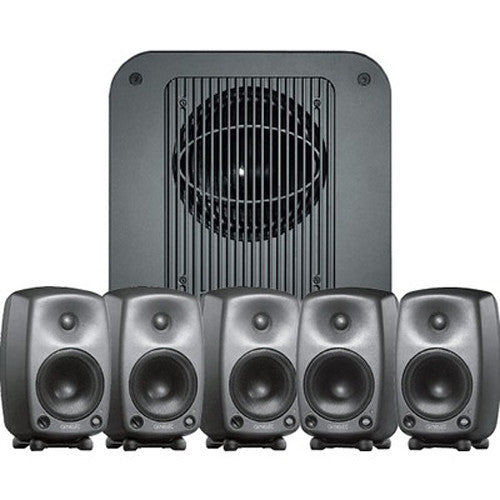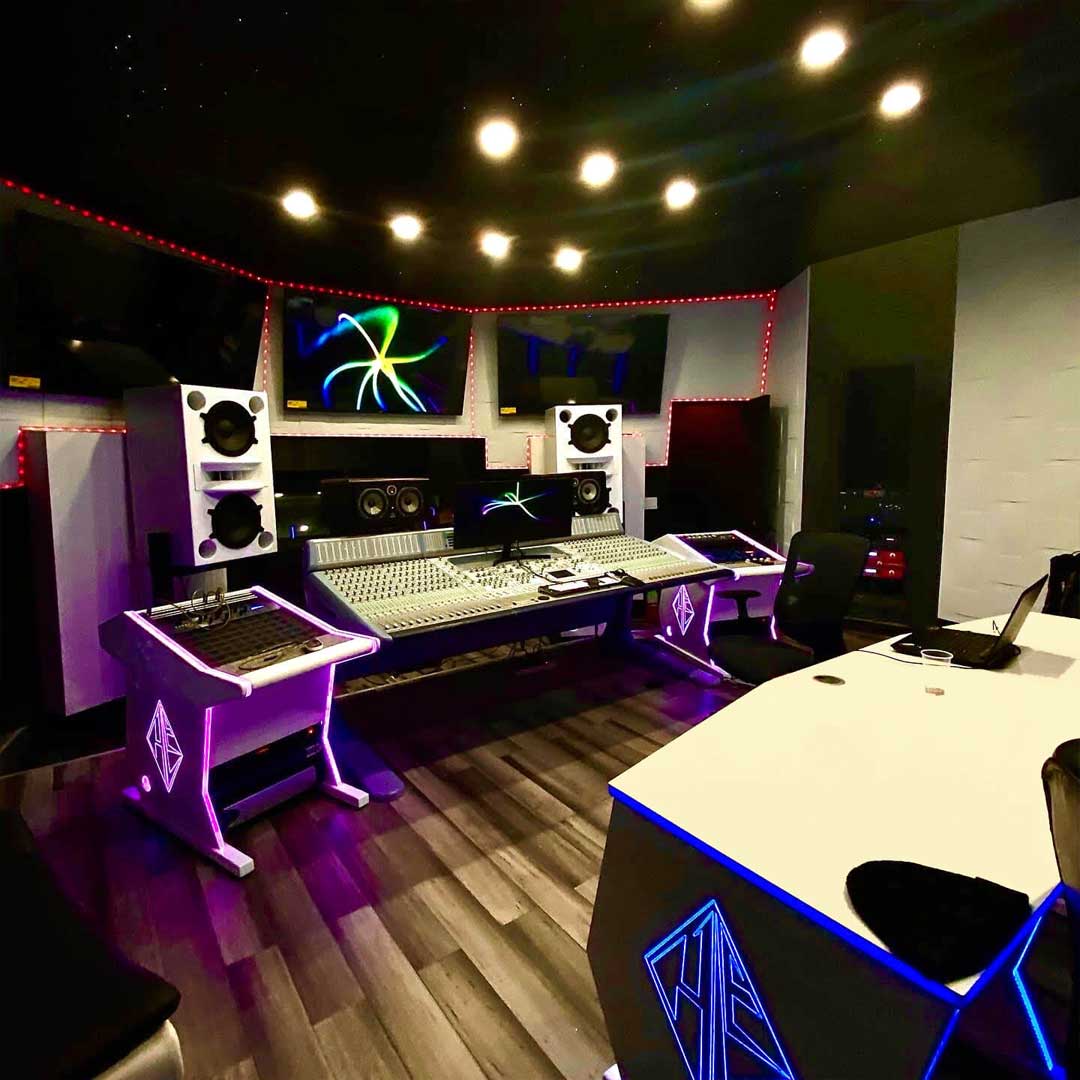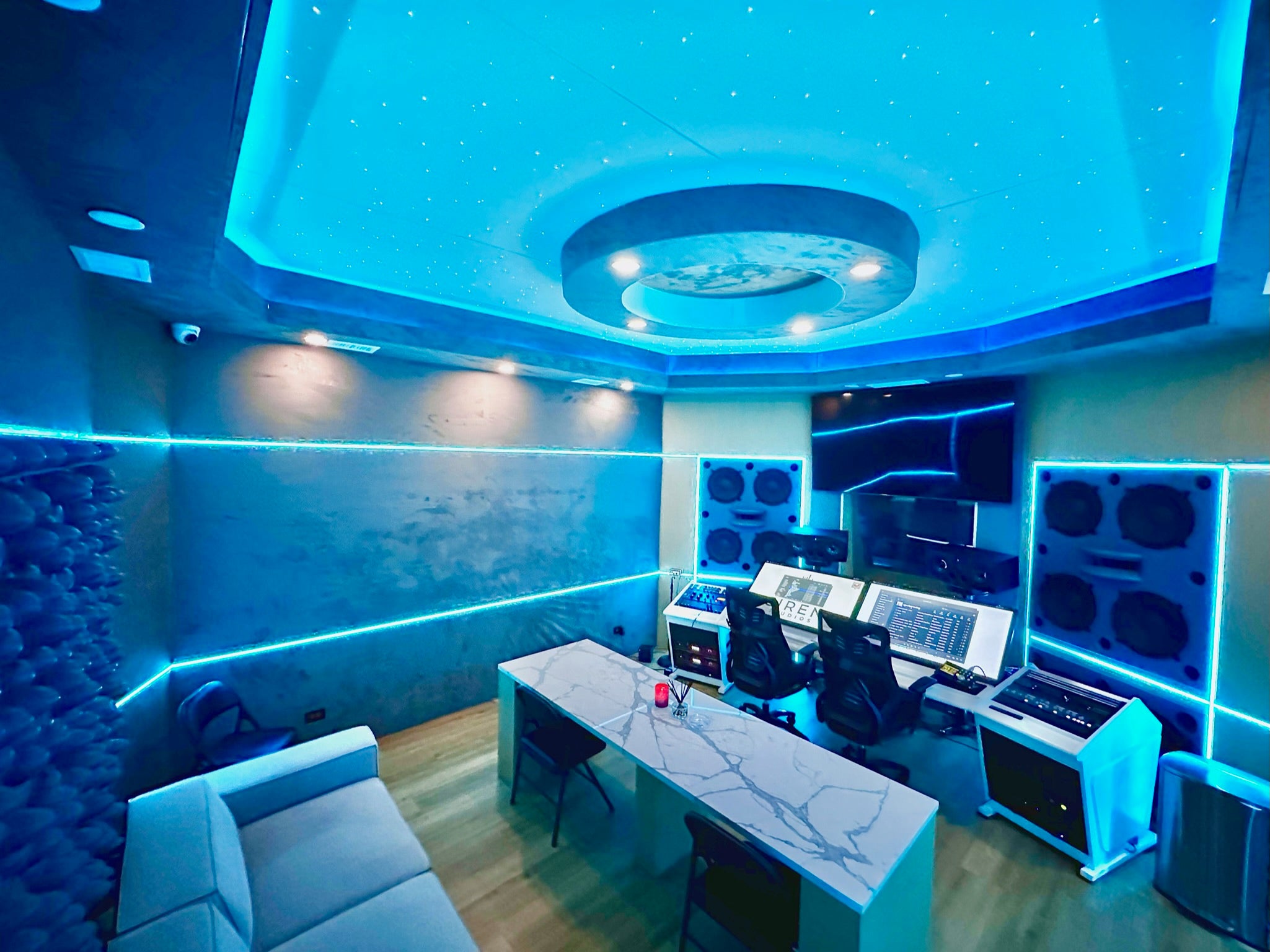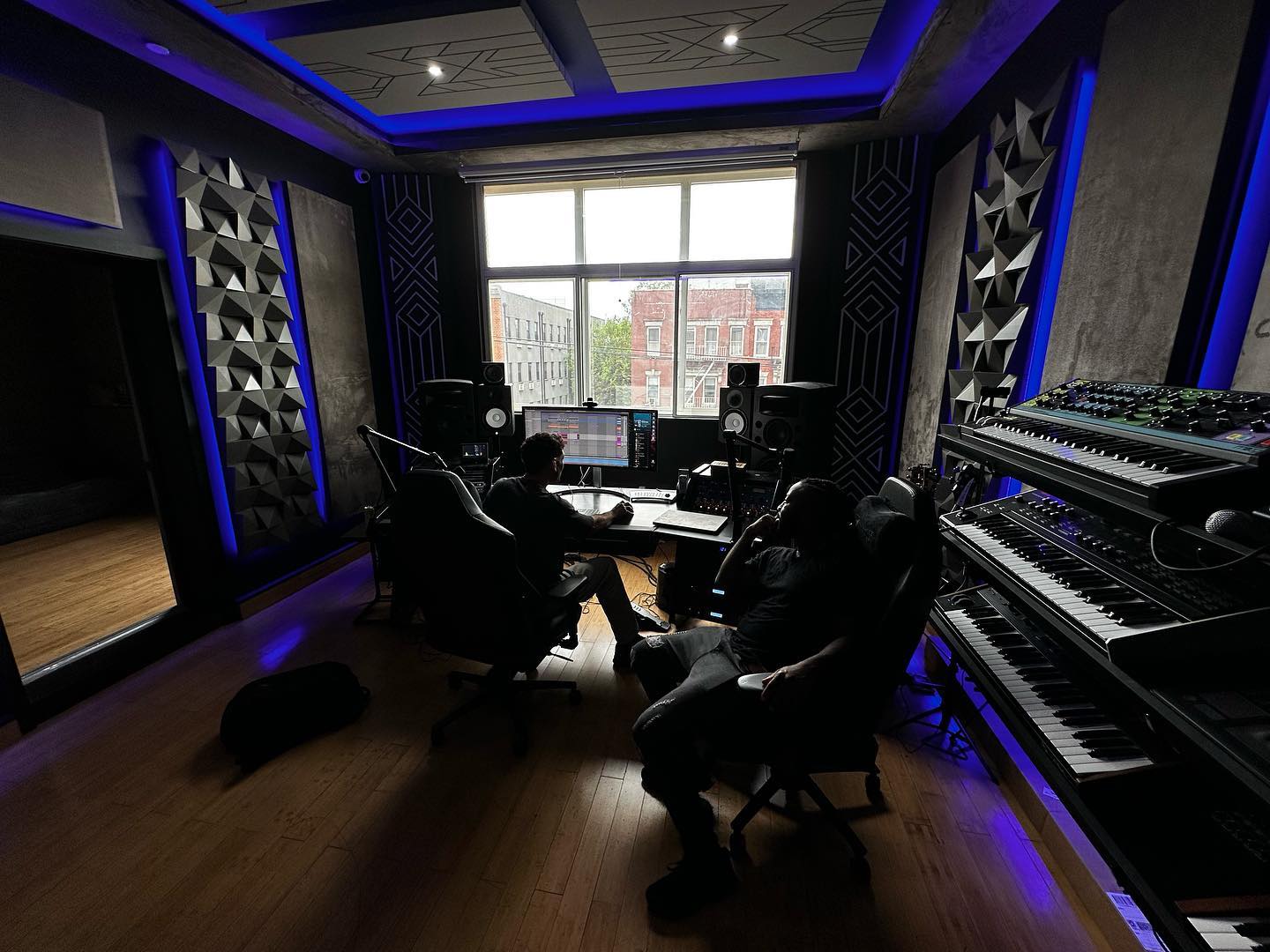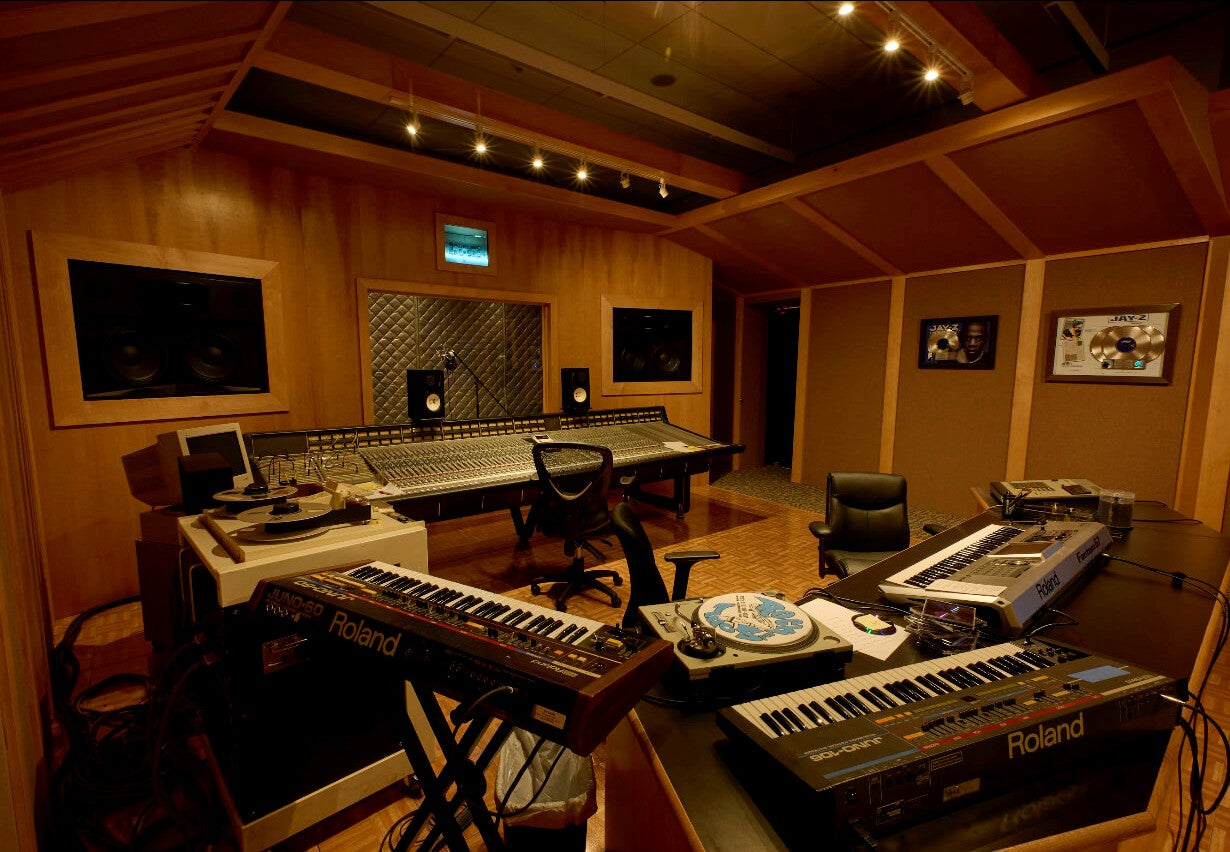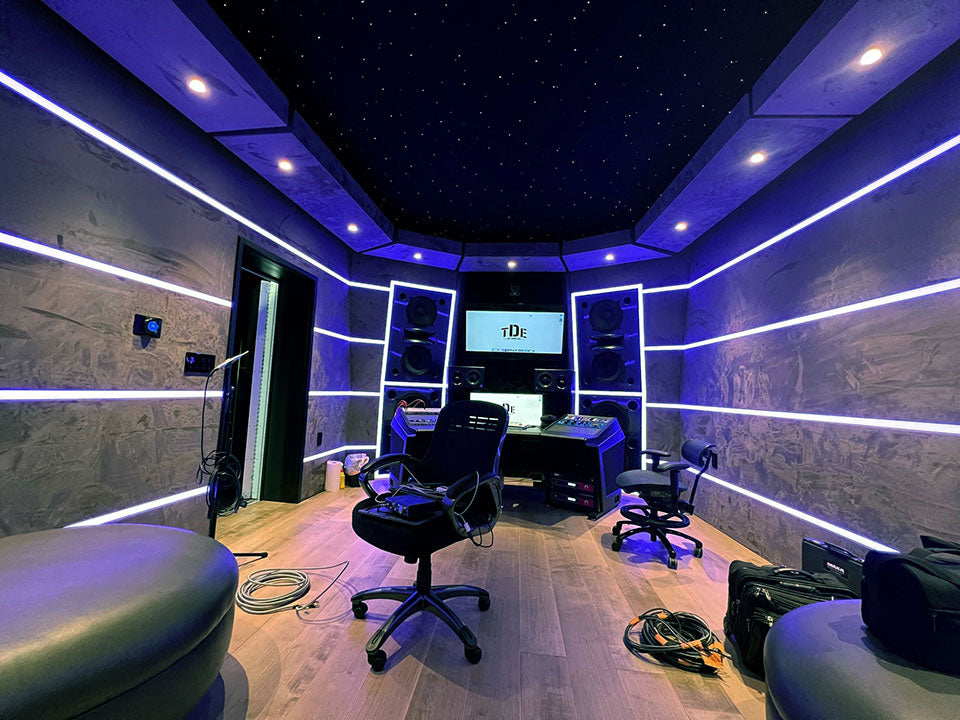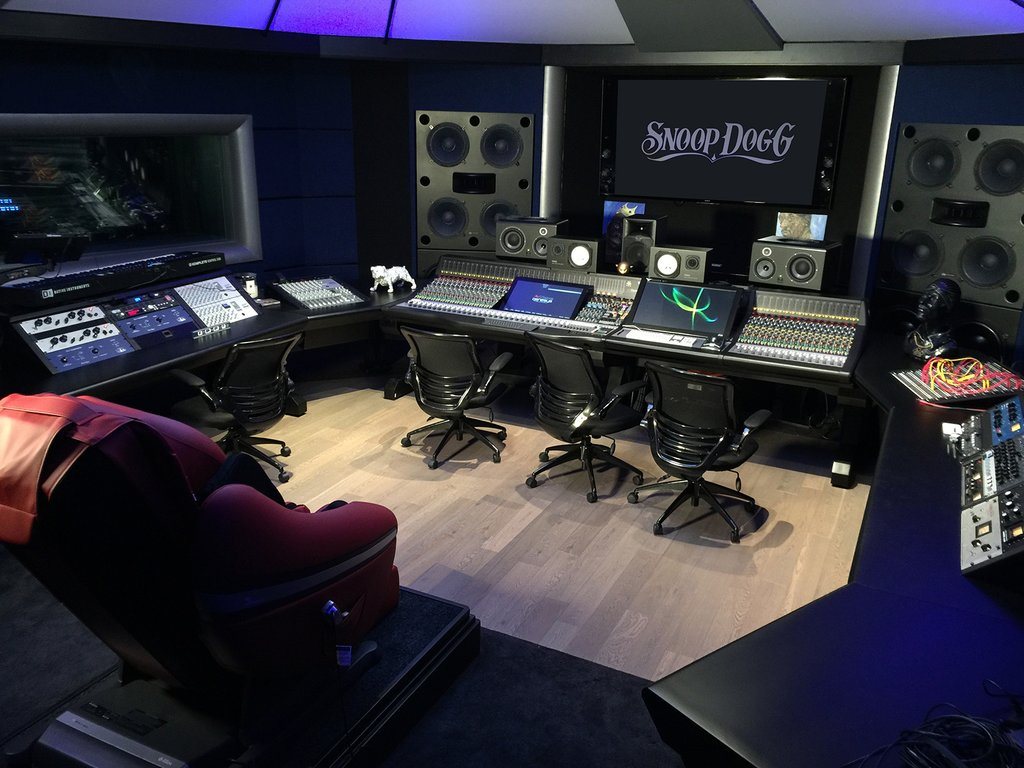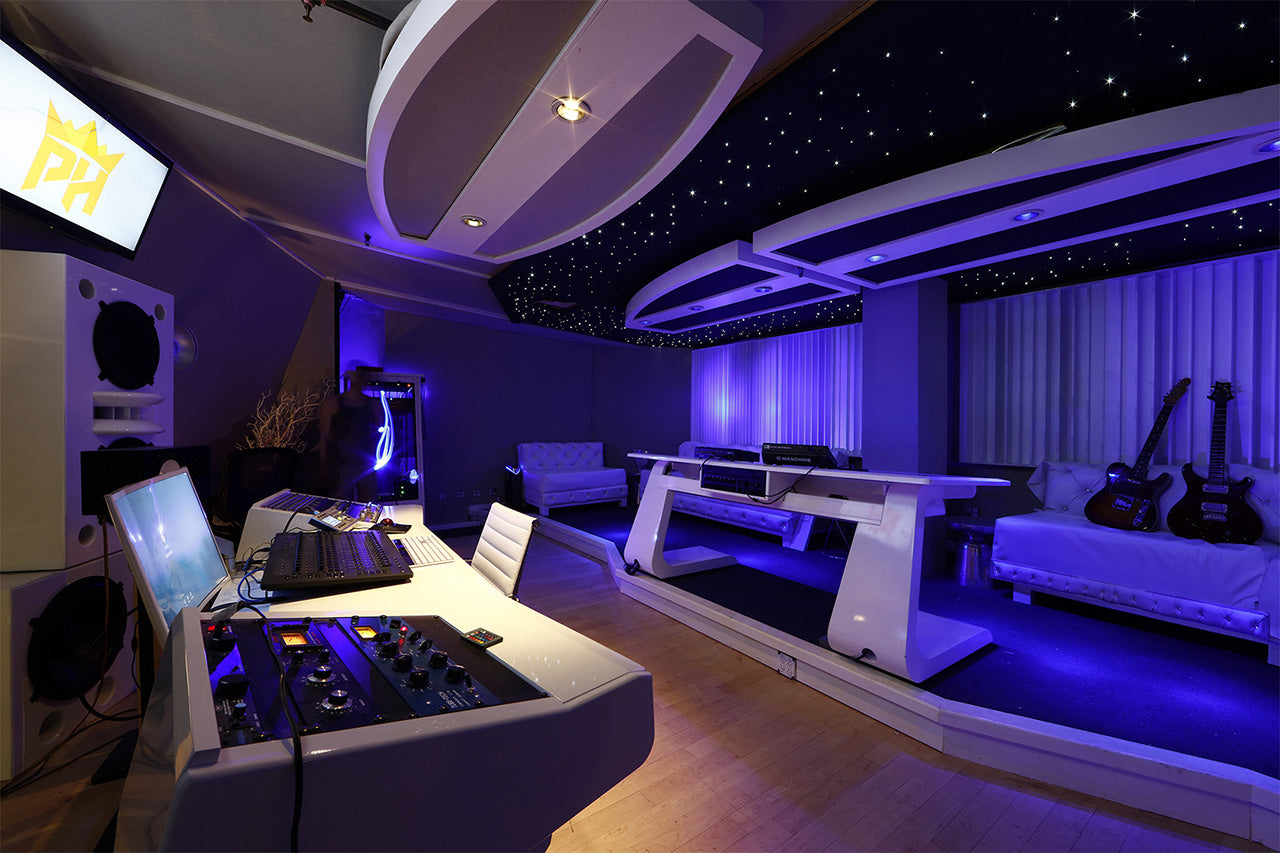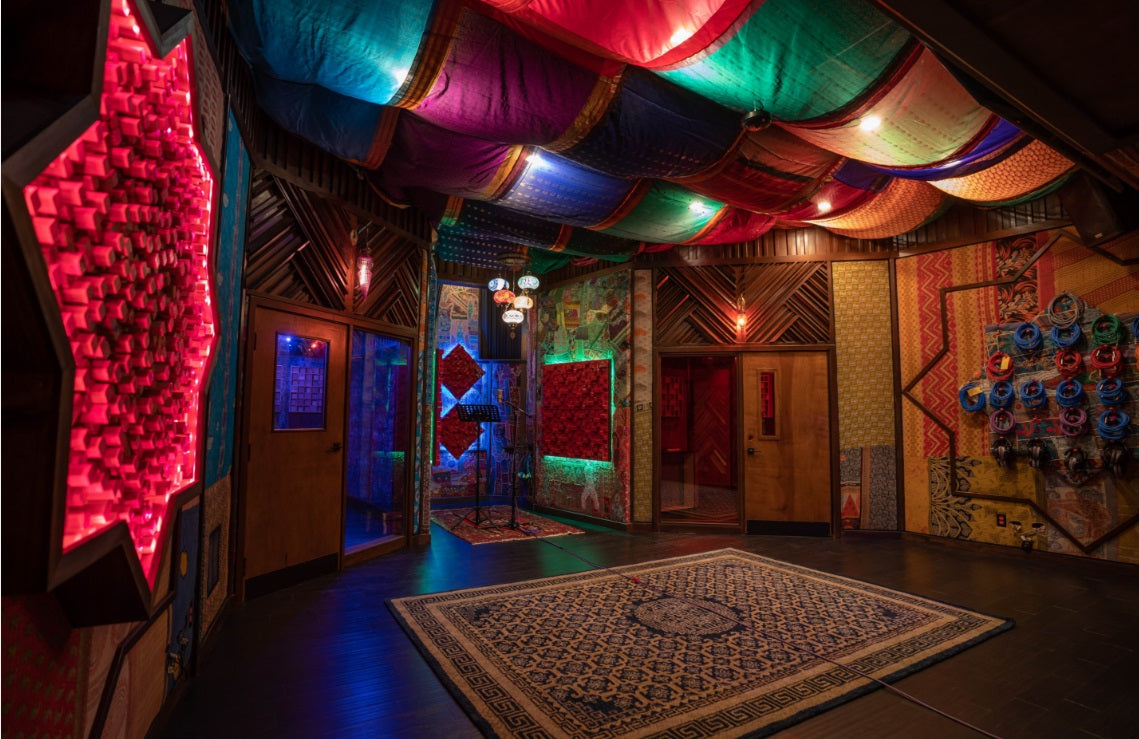The Genelec 8030.LSE PowerPak Plus is a multichannel system that comprises five 8030B* bi-amplified active studio monitors and one 300W 7360A SAM Smart Active Monitoring subwoofer designed for less than huge professional studios, post-production facilities, and even home theater . . . in a world, where Genelec sound rules.
The 8030.LSE PowerPak Plus builds on Genelec's award-winning PowerPak concept and gives it a brain-boost with the 7360A SAM smart subwoofer complementing the system's five 8030B 5" bi-amped monitors. Genelec's SAM series subwoofer functionality can be addressed via network with GLM 2.0 software, which also adds wired volume control to the system (GLM 9310 volume control optional). In relation to the PowerPak system, the 8030.LSE PowerPak Plus is designed to fill larger rooms by offering an additional 180 watts of power in the low frequency range (300W total) while incorporating proprietary Genelec technologies, including the Minimum Diffraction Enclosure (MDE), Directivity Controlled Waveguide (DCW), power-saving Intelligent Signal Sensing, Laminar Spiral Enclosure (LSE) design (7360A sub), extended room-compensation filters, AutoCal™ room calibration, and more. With Genelec's superior sound and imaging, the 8030.LSE PowerPak Plus raises the bar for surround sound room integration.
Genelec 8030.LSE PowerPak Plus unique features:
- Five 80W (40W LF/40W HF), 5" 8030B bi-amplified active monitors with room compensation EQ, directivity waveguide, auto power saving, and Iso-Pod™ stands
- One 10" 7360A SAM subwoofer with 300W optimized Class D power amp, bass management, LFE channel, AutoCal room-response, GLM 2.0 software, and 7.1 XLR I/O
Genelec 8030B - Behind the Grille
The 8030B is a compact nearfield monitor with superior imaging and a wide and linear frequency response of 58Hz to 20kHz (+/-2.0 the come courtesy of Genelec's proprietary Minimum Diffraction Enclosure (MDE) and Directivity Controlled Waveguide (DCW). The rounded corners and continuously curving form of the MDE enclosure blend seamlessly into the improved.
Directivity Control Waveguide (DCW), effectively reducing the comb filtering that results from edge diffraction, while providing a wide and stable sweet spot that enables you to move off axis without significant loss in the frequency response. Powered by a pair of 40 Watt amplifiers, the Genelec 8030B monitors offer a dB) from a 5" woofer and 3/4" hard-domed tweeter. In addition to low harmonic distortion, the 8030B also offers rear panel bass and treble tilt room response controls to tailor its response to your room.
The MDE enclosure is made of rugged die-cast aluminum, which also provides efficient heat dissipation capability and shielding against RF interference. Each speaker is also magnetically shielded for additional protection when used in close proximity to video monitors. And finally, the 8030B features Genelec's Iso-Pod table stand with adjustable tilt that enables the monitor's acoustical axis can be pointed precisely towards the listener for best sound reproduction. Additionally, as its name suggests, the Iso-Pod physically decouples the speaker preventing coloration caused by conduction of unwanted vibration to the mixing console or other mounting surfaces.
Genelec 8030B Studio Monitor - Just the Facts:
- Accurate on- and off-axis response via Directivity Control Waveguide (DCW) Curved, rigid aluminum Minimum Diffraction Enclosure (MDE) eliminates comb filtering from cabinet reflections
- Quiet, high air-flow reflex port design
- Room-response compensation EQ
- Optimized and highly efficient class D amplifiers
- Active crossovers
- Driver-protection circuitry
- Iso-Pod decoupling and speaker orientation stand
- Versatile mounting options
Genelec 7360A Subwoofer
The Genelec 7360A SAM subwoofer is designed to fill a small space with a lot of bass. A professional-level piece of kit, the 300W 7360A can also turn a home theater into a nonstop thrill ride . . .
Genelec's Smart subwoofers are purpose-built for the most demanding professional monitoring applications. Housed in the Laminar Spiral Enclosure (LSE), where industrial artistry meets articulate, precise low-frequency reproduction, Smart subwoofers deliver the goods with a high dynamic capability and comprehensive control. The 7360A Smart subwoofer features a multichannel bass-management system that offers adjustable crossover frequency to the main monitor system and much more. The 7360A Smart subwoofer can be used with the Genelec GLM network for full GLM 2.0 software functionality, including wired volume control. Adaptable to every acoustical environment, Smart subwoofers provide outstanding sound clarity, definition, and neutrality you can trust. Offering comfort, flexibility and unlimited configuration possibilities, you can now only focus on your creative work.
7360 SAM Smart Subwoofers features and benefits
- SAM subwoofers can be used without a computer and network control as complete stand-alone systems using either Stored Settings or Manual Settings (DIP switch and rotary controls) for various adjustments and functionality
- Genelec GLM AutoCal measures the response in the listening area and applies relevant compensation in the subwoofer frequencies to minimize room resonance effects
- An extended set of room-response compensation filters allow for increased in-room calibration precision and customer-defined calibration curves
- The Laminar Spiral Enclosure (LSE) design provides extended low-frequency performance, accurate tonal characteristics, and high dynamic capability
- Smart subwoofers support traditional analog bass management where the subwoofer handles both high- and low-pass filtering; and also distributed bass management architecture, where subwoofer outputs are un-filtered and main Smart monitors apply the necessary high-pass filtering locally
- A cost-effective 7.1 analog package also offers stereo AES/EBU XLR I/O without the need for additional external A/D converters
- The 9301 AES/EBU Multichannel Interface allows 7.1-channel digital audio sources to be connected to Smart subwoofers via a single XLR subwoofer output link
- Highly efficient Genelec-designed Class D amplifiers combined with latest technology drivers allow the 7360A to achieve substantially higher sound pressure level than its predecessors with high dynamic range, improved frequency response linearity, and very low distortion. This means clean, neutral and fatigue-free audio reproduction at the sound pressure level of your choice, enabling you to work consistently and accurately
- Highly efficient Class D amplifier technology represents a power-saving, environmentally-friendly solution
- High system reliability thanks to advanced protection circuitry guaranteeing predictable production times
- Universal mains input voltage allows easy connectivity to any mains power allowing use anywhere in the world
- Genelec Intelligent Signal Sensing (ISS) switches the system to standby when no audio input is detected, providing significant power consumption savings
- Smart subwoofers feature a hardware bypass for simple monitoring check without subwoofer frequency response extension
- All Genelec subs are factory calibrated and fully evaluated for acoustic performance, guaranteeing consistency between all models and consistent high performance
- Elegant and minimalistic industrial design combining state-of-the-art function with aesthetics
- SAM systems are fully backward compatible, allowing easy expansion of an existing monitoring system
- Genelec quality and reliability makes long-term investments cost-effective, ensuring an outstanding audio experience
Genelec PowerPak Plus Proprietary Technologies - Under the Hood
SAM Smart Active Monitors and Subwoofers
As control room real estate shrinks (as rents increase), professional-level audio now has to be produced in environments that often are less than ideal. An indispensable tool for audio professionals where space is not optimal, SAM systems are capable of automatically adapting to acoustic environments, and correct for levels, delays, and room anomalies. SAM Systems can be controlled via Genelec proprietary Loudspeaker Manager (GLM™) network and software, enabling you to build a highly flexible and reliable monitoring system.
The GLM 2 software is a highly intuitive and powerful monitor control networking system that manages connectivity to all SAM studio monitors and subwoofers on the network - up to 30. The GLM 2 software features level adjustment, distance delays, and flexible room compensation equalization with the state-of-the-art AutoCal automated calibration system. All parameters and settings are stored in system setup files or saved in each individual monitor or subwoofer if the GLM network needs to be disconnected.
Additionally, all acoustical features of SAM Systems can be optimized for different working styles or client demands. Even if the monitors or projects move between rooms, SAM technology will provide consistency regardless of environment, a neutral soundstage, and low distortion.
Directivity Control Waveguide (DCW) Technology (8030B)
Genelec's Directivity Control Waveguide shapes the emitted wavefront of direct radiating multi-way monitors in a way that allows predictable tailoring of the speaker's dispersion pattern. DCW technology also minimizes early reflections, providing a wide, controlled listening area with accurate sound reproduction both on- and off-axis.
Another advantage of minimized early reflections and controlled constant directivity is that the frequency balance of the room's reverberation field is essentially the same as the direct field from the monitors. As a result, the monitor's performance is less affected by room acoustic characteristics.
The consistent off-axis frequency response of the waveguide enables engineers to move in and out of the sweet spot without losing perspective while working room.
DCW technology key benefits:
- Flat on- and off-axis response for wider usable listening area
- Increased direct-to-reflected sound ratio for reduced control room coloration
- Improved stereo and soundstage imaging
- Increased drive unit sensitivity up to 6dB
- Increased system maximum sound pressure level capacity
- Decreased drive unit distortion
- Reduced cabinet edge diffraction
- Reduced complete system distortion
Minimum Diffraction Enclosure (MDE™) Technology
Genelec's highly innovative aluminum enclosure (MDE) improves the linearity of the frequency range and power response of free-standing monitors via rounded edges and gently curved front and sides optimized to match the acoustic properties of the drivers. In addition to achieving a remarkably flat frequency response, minimizing cabinet diffraction yields superb sound stage imaging.
Directivity is further improved by the waveguide being integrated into the MDE enclosure. Since the low-frequency limit for constant directivity is determined by the size of the waveguide, the larger the surface the better the control. Highly directional off-axis radiation yields a consistent listening window, which is critically important in multichannel monitoring. Controlled directivity also reduces possible first-order reflections on surfaces near the loudspeaker, such as walls, floors, ceilings, and studio furniture, which contributes to consistent audio reproduction in various acoustical environments.
High air-flow bass reflex port design
There are three methods to handle bass frequencies in small monitors, infinite baffle, or sealed cabinet, ported reflex, and transmission line (passive radiator designs are a subset of ported reflex speakers). Genelec's choice for vented, or reflex, enclosures dates back to the first Genelec product in 1978. Since then Genelec has refined and improved their designs to increase low-frequency extension and sound pressure level capability to provide outstanding bass articulation and definition.
The downside of ported designs is that turbulence in the ports due to extreme air pressure from the driver excursions can cause chuffing noise in the ports, and/or interfere with frequencies higher up in the spectrum. To minimize air speed and turbulence, the cross-sectional area of the vent should be large. This, in turn, means that the vent tube has to be long, which presents quite a design challenge. Genelec's solution is a long, curved tube that maximizes airflow so deep bass can be reproduced without compression. The reflex tube terminates with a wide flare located on the rear of the enclosure minimizing port noise and providing excellent bass articulation.
The curvature of the tube has also been carefully designed to minimize any audible noise, compression, or distortion. The inner end of the tube has the proper resistive termination to minimize audible chuffing noise and air turbulence. Proper reflex port design allows also to significantly reduce the woofer's displacement, improving the linear low-frequency output capacity.
PAD Pro tech note: For small cabinets to handle bass frequencies lower than the laws of physics would allow, the ported or reflex is the easiest design from a manufacturing standpoint to achieve a deep bass response. It takes advantage of the cabinet's resonance and in essence feeds sound coming from the rear of the speaker through a tube connected to the back of the cabinet into ports, which are usually on the front panel. The length and diameter of the tube are precisely calculated for the desired low-frequency response. The trick is to make sure the sound coming from the port is in phase with the speaker, which reinforces the low frequencies of the monitor. It's important to note that while this technique does provide a better bass response in small cabinets, it's primarily a psychoacoustic effect. The addition of a subwoofer enables smaller drivers to handle midrange frequencies while bass frequencies are directed to a larger dedicated bass driver.
Intelligent Signal Sensing function
Genelec's Intelligent Signal Sensing (ISS) is a power-saving feature that prolongs the service life of the monitor. ISS reduces power consumption to less than 0.5 watts by automatically switching the active monitor to standby when no audio signal has been detected for some time. When playback begins, the mode indicator light on the loudspeaker lights up and the playback resumes after a slight delay (<2 seconds).
Protection circuitry
The protection circuitry prevents driver failure by detecting signal levels and responding accordingly. In the case of sudden peaks or levels that are too high for long periods, the protection circuitry reduces signal level automatically. This feature does not affect the sound quality in any way when working within the specifications of the loudspeaker, but only prevents inappropriate input signals from breaking the loudspeaker.
Protection circuitry features and benefits:
- Reduces the output level when required (e.g. when driver voice coil temperature reaches the safe limit), which highly improves system reliability
- Appropriate protection circuitry design for each loudspeaker and subwoofer maximizes system output level
Room compensation controls
Each room changes the monitor's response in a unique way, e.g. reflective vs. damped rooms, or placement against a wall vs. on a stand away from the walls. All Genelec loudspeaker systems feature room response adjustments to compensate for the room influences and retrieve a flat frequency response at the listening position. Frequency response can be adjusted to match the acoustic environment by setting the tone control switches on the rear panel of all Genelec monitors.
Optimized amplifiers with active crossover
In a typical 2-way loudspeaker system, the active crossover needs two power amplifiers; one for the woofer and one for the tweeter. Electronic crossovers split the audio signal into separate frequency bands that can be separately routed to individual power amplifiers optimized for the frequency band of their respective transducers.
The power amplifiers are connected directly to the drivers of an active loudspeaker, resulting in the power amplifier's load becoming much simpler. Each driver-specific power amplifier has only a limited frequency range to amplify (the power amplifier is placed after the active crossover), which adds to the ease of design.
The active design principle offers multiple benefits:
- The power amplifiers are directly connected to the speaker drivers, maximizing the control exerted by the power amplifier's damping on the driver's voice coil, reducing the consequences of dynamic changes in the driver electrical characteristics. This may improve the transient response of the system
- There is a reduction in the power amplifier output requirement. With no energy lost in the passive crossover filter components, the amplifier power output requirements are reduced considerably (by up to 1/2 in some cases) without any reduction in the acoustic power output of the loudspeaker system. This can reduce costs and increase audio quality and system reliability
- No loss between amplifier and driver units results in maximum acoustic efficiency
- Active technology can achieve superior sound output vs. size vs. low-frequency cut-off performance
- All loudspeakers are delivered as a factory aligned system (amplifiers, crossover electronics, and enclosure-driver systems)
Iso-Pod stand (8030B)
Often workstation furniture has equipment racks whose top surfaces double as speaker stands. While this may be a convenient option, placing speakers on wooden surfaces or console meter bridges has side effects detrimental to accurate and effective monitoring. In such a scenario, aiming the loudspeaker axis towards the listener rarely occurs, and sympathetic vibrations (which are not very sympathetic to bass) propagate from the loudspeaker to the surface. Also, first-order reflections on the surface cause comb filtering and subsequently ripples in the frequency response.
To solve these very common problems Genelec designed the Iso-Pod Isolation Positioner/De-coupler. Made from special lossy rubber-like material to de-couple the speaker from a surface, it has four shallow feet and is firmly attached to the enclosure so that it can be slid along the curved bottom or side surface to allow for a ±15° tilt of the loudspeaker. The loudspeaker's acoustical axis can then be pointed precisely towards the listener. The vibration isolation and damping properties reduce midrange coloration caused by unwanted vibration transmitted to supporting surfaces.
Versatile mounting options (8030B)
On the base of the 8030 is a 3/8" UNC threaded hole which can accommodate a standard microphone stand. On the rear there are two M6x10 mm threaded holes for an Omni-mount® size 20.5 bracket.
Laminar Spiral Enclosure (LSE) - 7360A Subwoofer
An essential property of a subwoofer operating at high sound pressure levels is its capacity to move high volumes of air without distortion, which is a function of air turbulence inside the bass reflex port. This effect presents challenges to the woofer and reflex port designs. Genelec's patented Laminar Spiral Enclosure (LSE) provided the solution.
By way of a little background, large air currents, such as those found in bass reflex ports, have a great deal of kinetic energy, which causes the flow to be irregular and turbulent as cross-streams perpendicular to the direction of air flow is formed. A laminar air flow is a streamline flow in which air travels smoothly in parallel layers or paths, with no interference or disruption across layers.
The Laminar Spiral Enclosure (LSE) bass reflex cabinet provides excellent laminar flow characteristics with minimal turbulence noise and enables an optimal packing of a very long reflex tube into a small space.
The 7360A's enclosure is made from a spiral-shaped strip of steel. Its purpose is to provide mechanical stability for a large amount of pressure generated inside the subwoofer. The spiral also forms the bass reflex port, enabling linear airflow even at the highest SPL output. The fact that one is part of the other means that air flow in and out of the enclosure's interior through the port is totally unrestricted. This flow-optimized construction provides extended low-frequency capacity and low distortion resulting in precise bass articulation, with measured second and third harmonic distortion levels typically better than 30dB below the fundamental. This results in an extraordinarily accurate and responsive low-frequency system.
Bass management system (7360A Subwoofer)
Bass management, from a corporate perspective, is the man's way of keeping the low frequencies down. Seriously, it's quite simply a means of directing the bass content of main and low-frequency effect (LFE) channels to the speakers that are best capable of handling them. A Bass Management system uses either analog electronic circuitry or software-based filtering to take low-frequency information from the main channels and route it to a subwoofer feed. Bass management's basic and main goal is to ensure that the entire audio bandwidth of all channels can be accurately monitored.
The bass management unit in the 7360A subwoofer splits the input into low- and high-frequency components at 85Hz. Frequencies below 85Hz are reproduced by the subwoofer. Frequencies above 85Hz are directed via the subwoofer's output connectors to the main monitors.
Bass management benefits are:
- The subwoofer extends the system frequency response down the lower limit of the audible range
- Monitor can produce a higher maximum sound level when not reproducing low frequencies
- Optimized low-frequency reproduction by selecting adequate subwoofer location; monitors can also be placed more freely
- Subwoofer's output are aligned in level and phase with monitors allowing flat and accurate reproduction down to 19 Hz and across the crossover point
- LFE channel output level (0 or +10 dB re. main channels) can be selected for accurate reproduction depending on the source type
- The ability to bypass the subwoofer allows you to evaluate the audible impact of the subwoofer
The Genelec 8030.LSE PowerPak Plus is the professional's solution for multichannel production across multiple facilities, or taking the one you have and making the most of it. For more information on integrating a PowerPak Plus system into your studio, call or chat online with your PAD Studio Specialist today.
Specifications
Genelec 8030B:
- Maximum sound pressure level: 100dB
- Frequency response: 58Hz-20kHz (± 2 dB), 55Hz-21kHz (-3dB)
- Crossover frequency: 3.0kHz
- Driver dimension: Bass 5" / treble 3/4" in metal dome + DCW™
- Amplifier power: Bass 40W/treble 40W
- Connectors: 1 x XLR analog in
- Dimensions (HWD): 11-13/16" x 7-7/16" x 7" (299 x 189 x 178 mm) with Iso-Pod
- Weight: 12.3 lb. (5.6 kg)
Genelec 7360A specifications:
- Maximum sound pressure level*:109dB
- Free-field frequency response (-6dB): 19Hz–100Hz main channels; 19Hz–150Hz LFE channel
- Accuracy of frequency response: ±3dB (19Hz-150Hz)
- Drivers: 10"
- Amplifier power: 300 W (Class D)
- Connectors: 7.1 analog XLR inputs / outputs 1 x input / 1 x output
- XLR digital AES/EBU; 2 x RJ45 control network
- Dimensions (HWD): 20-3/4" x 18-3/16" x 14-5/16" (527 x 462 x 363 mm)
- Weight: 59 lb. (27 kg)
*Maximum short term sine wave sound pressure level averaged from 30Hz to 85Hz, measured in half space, on-axis, at 1 meter
